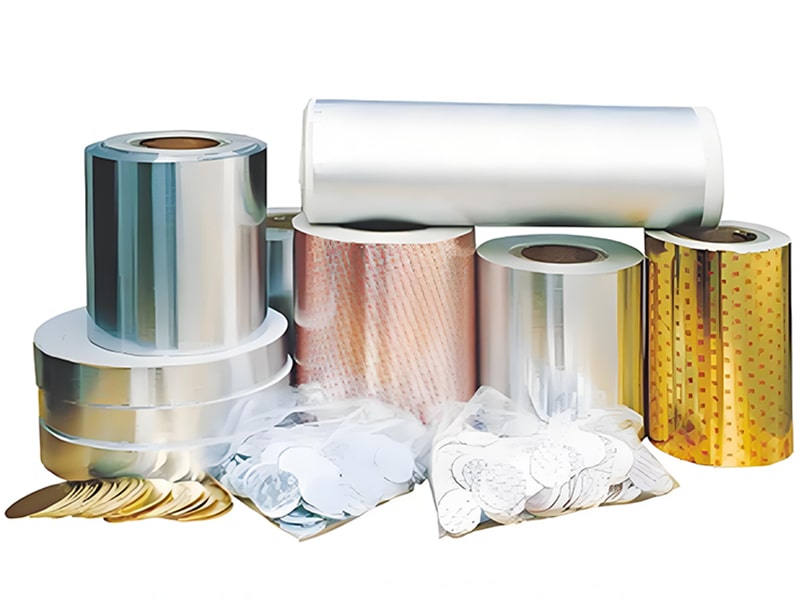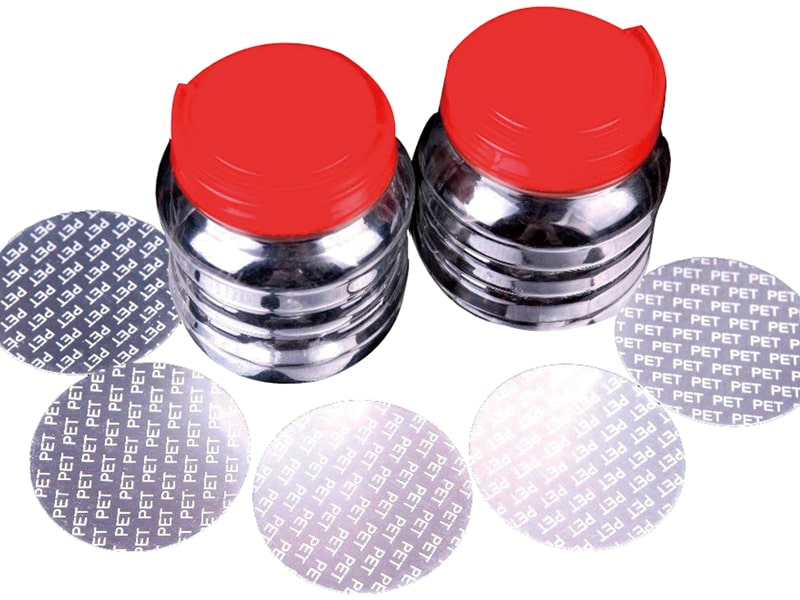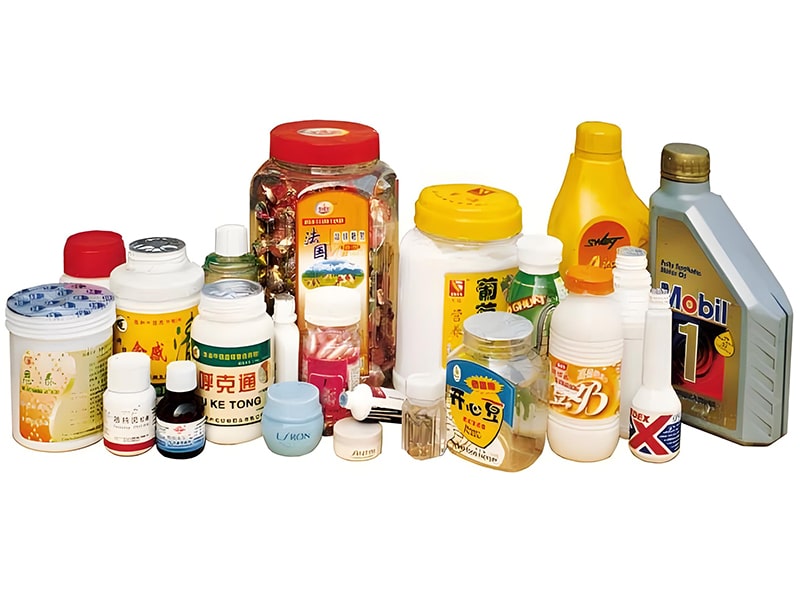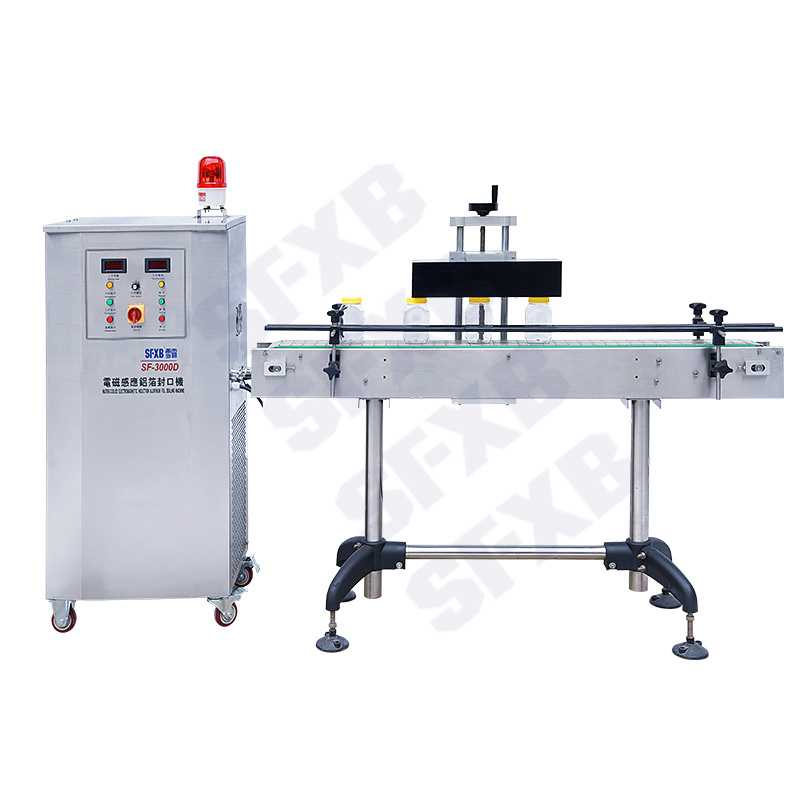In the realm of packaging and sealing technologies, aluminum foil sealing gaskets have emerged as a critical component for ensuring the integrity and safety of products. These gaskets are widely used in various industries, including food, pharmaceuticals, and cosmetics, due to their exceptional sealing properties. But have you ever wondered what material the aluminum foil sealing gasket is made of? In this article, we will delve into the composition, properties, and applications of aluminum foil sealing gaskets, providing you with a comprehensive understanding of this essential packaging component.
What is an Aluminum Foil Sealing Gasket?
Before delving into the materials, it is essential to understand what an aluminum foil sealing gasket is and its function within sealing machines. Simply put, the aluminum foil sealing gasket acts as the interface material installed inside the sealing cap or sealing head, which comes into direct contact with the container’s opening. When the sealing machine applies heat and pressure, the gasket forms a hermetic seal that prevents leakage, contamination, and tampering.
Key functions of the aluminum foil sealing gasket:
● Creating an airtight barrier.
● Offering chemical resistance.
● Withstanding heat during heat-sealing processes.
● Compliance with food and pharmaceutical safety standards.
Thus, the gasket’s material composition directly influences the performance and durability of the aluminum foil sealing.
Main Materials Used in Aluminum Foil Sealing Gaskets
Aluminum foil sealing gaskets are complex, multi-layered composites engineered from various materials to maximize sealing performance and chemical compatibility. The primary materials involved generally include the following:
1. Aluminum Foil Layer
The core component is the thin sheet of aluminum foil, typically ranging from 8 microns to 20 microns in thickness. Aluminum foil is selected for its excellent barrier properties against gases, moisture, and odors.
● Barrier Function: Aluminum foil acts as an inert barrier, crucial in preventing oxygen and moisture ingress, which can degrade product quality.
● Conductivity: The foil efficiently transfers heat from the sealing machine to the container’s rim, synchronizing with the heat-sealing process.
● Physical Properties: Lightweight yet durable, this layer is flexible enough to conform to cap rims while maintaining structural integrity.
The aluminum itself is usually pure aluminum or an alloy with slight amounts of other metals to optimize strength without losing flexibility.
2. Heat Seal Coating Layer
On one or both sides of the aluminum foil lies a specialized heat seal coating. This polymer resin layer is critical for bonding the gasket to the container surface during sealing.
● Common Polymers Used: Polyethylene (PE), Ethylene-Vinyl Acetate (EVA), or Polypropylene (PP).
● Function: When heated by the sealing machine, the coating melts and creates a tight seal by fusing with the container’s rim (usually glass, plastic, or metal).
● Varieties: Some gaskets use induction heat seal coatings compatible with electromagnetic sealing machines, while others use direct heat seal coatings.
3. Liner or Cushion Layer
Some aluminum foil sealing gaskets integrate a cushioning layer or liner beneath the aluminum foil.
● Materials: Expanded polyethylene foam, pulpboard, or foam rubber.
● Purpose: To absorb pressure during sealing, ensuring uniform contact and compensating for surface irregularities.
● Benefits: Enhances sealing consistency and prevents damage to the container or foil during capping.
4. Optional Wax or Oil Coating
In certain designs, a thin wax or oil layer is applied to the gasket surface. This facilitates easy cap opening, ensuring consumer convenience without compromising seal integrity.
 |
| Composite sealing aluminum foil sealing gaskets |
Key Material Properties of Aluminum Foil Sealing Gaskets That Affect Performance
Understanding the specific characteristics of these materials helps explain why they are chosen for aluminum foil sealing gaskets in sealing machines.
1. Chemical Resistance
● The aluminum foil and polymer layers resist interaction with a wide range of chemicals, including acids, alkalis, and solvents commonly found in packaged products.
● This resistance prevents gasket degradation and contamination.
2. Thermal Stability
● The materials can withstand temperatures generated by sealing machines (typically 120°C to 160°C) without melting or deforming prematurely.
● The heat seal coating specifically melts at a controlled temperature to form a secure bond.
3. Barrier Effectiveness
● The foil layer blocks gas and moisture transmission, crucial for maintaining the packaged product’s freshness.
● Polymer coatings complement the barrier by ensuring seal integrity.
4. Mechanical Flexibility
● The gasket must be flexible enough to deform under pressure, allowing the seal to form on irregular container openings.
● Elastic liners help maintain consistent pressure during sealing.
5.Tamper-Evidence & Safety
● Any tampering breaks the seal, ensuring product integrity.
6.Customizability
● Available in different thicknesses, diameters, and coatings for varied applications.
Common Types of Aluminum Foil Sealing Gaskets
Depending on the product application and sealing technology, aluminum foil sealing gaskets come in several types:
● Plain Aluminum Foil Gaskets: Simple aluminum foil with heat seal coatings for standard capped containers.
● Foam Insert Gaskets: Include a foam layer for better sealing on uneven surfaces.
● Pressure Sensitive Gaskets: Have adhesive layers enhancing seal strength.
● Induction Seal Gaskets: Designed for induction sealing machines, incorporating layers compatible with electromagnetic induction heating.
Each type uses a particular combination of materials tailored for specific industrial requirements.
Different applications demand tailored materials. Below are common variants:
1. Electromagnetic Induction Gaskets
Structure: Aluminum foil + PE foam + adhesive.
Applications: Beverage bottles, cosmetic containers.
Advantages:
No residue post-sealing.
Compatible with automated filling lines
2. Heat-Sealable Foil Liners
Structure: Aluminum foil + heat-activated adhesive.
Applications: Pharmaceutical blister packs, food trays.
Advantages:
Tamper-proof seals.
High burst resistance (tested to 30 psi)
3. PS Foam-Based Gaskets
Structure: Polystyrene foam core + aluminum foil + adhesive.
Applications: Glass jars, chemical containers.
Advantages:
Shock absorption for fragile items.
Cost-effective for bulk packaging
 |
 |
| glass bottle sealing film | PET gasket film |
Why Material Choice Matters in Sealing Machines for Packaging Manufacturing
The choice of materials directly affects:
● Seal Integrity: Faulty gasket materials can lead to leakage, spoilage, and reduced shelf life.
● Safety & Compliance: Use of food-grade polymers and inert aluminum foil ensures compliance with FDA, EU, and other global food safety regulations.
● Machine Efficiency: Proper material selection ensures compatibility with the sealing machine’s parameters, avoiding failures or frequent maintenance.
● Environmental Impact: Increasingly, manufacturers seek recyclable or environmentally friendly materials, influencing material innovations in the sealing gasket market.
Manufacturing Process of Aluminum Foil Sealing Gaskets
The production involves precision lamination and coating:
Step 1: Aluminum Foil Preparation
● High-purity aluminum is rolled into thin sheets.
● Surface treatment ensures cleanliness and adhesion for coatings.
Step 2: Polymer Coating Application
● The heat-seal layer is extruded or laminated onto the foil.
● Thickness is controlled for consistent sealing performance.
Step 3: Lamination (If Multilayer)
● Additional layers (paper, PET) are bonded using adhesives.
Step 4: Die-Cutting & Slitting
● Gaskets are cut into precise diameters matching container openings.
Step 5: Quality Testing
● Seal strength, barrier properties, and heat resistance are verified.
Applications in Different Industries
A. Food & Beverage
● Bottled sauces, dairy, juices – prevents spoilage.
● Coffee & tea packaging – retains aroma.
B. Pharmaceuticals
● Medicine bottles – ensures sterility.
● Vaccine vials – maintains efficacy.
C. Cosmetics & Chemicals
● Lotions, perfumes – prevents evaporation.
● Industrial chemicals – avoids leakage.

Innovations and Trends in Aluminum Foil Sealing Gasket Materials
The packaging industry constantly evolves to meet higher environmental and performance standards:
● Biodegradable and Compostable Polymers: Research focuses on replacing traditional polymers with biodegradable alternatives that maintain heat seal properties.
● Multi-layer Films: Advanced laminates combining aluminum foil with other barrier films for enhanced protection and flexibility.
● Nanotechnology: Incorporation of nano-coatings to improve chemical resistance and barrier properties without increasing material thickness.
● Smart Seals: Development of gaskets that incorporate tamper-evident or freshness indicators, all based on sophisticated aluminum foil composites.
Tips for Manufacturers Using Aluminum Foil Sealing Gaskets and Sealing Machines
1. Material Compatibility: Always procure gaskets recommended by your sealing machine supplier to ensure thermal and pressure compatibility.
2. Storage Conditions: Store gaskets in cool, dry environments to prevent premature degradation of polymer layers.
3. Regular Quality Checks: Inspect gaskets for physical damage or material inconsistency to avoid production line failures.
4. Customized Solutions: For specialty products (e.g., pharmaceuticals, chemicals), consider custom gasket compositions tailored for enhanced resistance or compliance.
How Sealing Machines Work with Aluminum Foil Gaskets:How the Magic Happens
The sealing process is typically achieved through induction heating, which involves passing the container with the foil sealing gasket through an electromagnetic field generated by a sealing machine. This field heats the aluminum foil, which in turn melts the polymer coating. As the polymer cools, it bonds to the container’s opening, creating a hermetic seal.
Sealing machines (induction, conduction, or thermal) apply heat to activate the gasket’s polymer layer.
A. Induction Sealing Process
1. The gasket is placed on the container.
2. The sealing machine generates an electromagnetic field.
3. The aluminum foil heats up, melting the polymer layer.
4. Upon cooling, a hermetic seal forms.
B. Benefits of Using Sealing Machines
● Fast, consistent sealing (up to 100+ containers per minute).
● No direct contact – reduces contamination risk.
● Energy-efficient – only heats the foil, not the entire container.
SFXB specializes in providing advanced sealing machines that ensure consistent and reliable seals. Our machines are designed to handle various container sizes and shapes and can be customized to meet specific production requirements. The precision and control offered by our machines contribute to the quality and integrity of the final sealed product.
 |
SF-3000 Water-cooled automatic electromagnetic induction aluminum foil sealing machine
Water-cooled circulating cooling system is adopted to ensure the stability and consistency of sealed products |
Choosing the Right Gasket: Key Considerations
Selecting the right aluminum foil sealing gasket is crucial for optimal performance. Several factors should be considered:
Container Material: The polymer coating of the gasket must be compatible with the container material.
Product Being Packaged: The gasket must be resistant to the product being packaged and prevent any migration of chemicals into the product.
Temperature Requirements: The gasket must be able to withstand the temperatures associated with the filling, storage, and transportation of the product.
Shelf Life Requirements: The gasket must provide an adequate barrier to oxygen, moisture, and other contaminants to ensure the desired shelf life of the product.
Sealing Machine Compatibility: The gasket must be compatible with the type of sealing machine being used.
SFXB: Your Partner in Sealing Solutions
At SFXB, we understand the critical role of aluminum foil sealing gaskets in ensuring the quality and safety of your products. As a leading manufacturer of packaging and sealing machines, we offer a comprehensive range of solutions to meet your specific needs. Our machines are designed to provide consistent and reliable seals, and we work closely with our customers to ensure that they select the right gaskets for their applications.
We pride ourselves on our commitment to quality, innovation, and customer satisfaction. Our team of experienced engineers and technicians is dedicated to providing you with the best possible solutions for your packaging needs. We are here to help you navigate the complexities of aluminum foil sealing gaskets and ensure that your products are protected and preserved.
Conclusion:
The aluminum foil sealing gasket is an indispensable component in modern packaging machinery, combining aluminum foil’s outstanding barrier properties with polymer heat seal coatings and supporting layers to ensure a safe, reliable seal. The selection and design of these materials directly impact sealing performance, package integrity, and regulatory compliance.
For manufacturers and exporters seeking the best packaging solutions, partnering with experienced sealing machine and gasket providers—such as those at https://www.xuebapack.com/—ensures access to advanced materials and expert guidance.
By understanding the complex material science behind aluminum foil sealing gaskets, industry professionals can optimize their packaging lines, meet regulatory standards, and deliver high-quality packaged products to the global market.
| References: | |
| 1. | PDA Technical Report No. 27, (TR 27) Pharmaceutical Package Integrity Retrieved from:Parenteral Drug Association |
| 2. | “Biodegradable Polylactic Acid Coatings for Aluminum Foil Gaskets: Thermal and Mechanical Performance” (2024) Retrieved from:Wiley Online Library |
| 3. | “Nanoengineered ePTFE/Aluminum Foil Hybrid Gaskets for Gas-Permeable Sealing” (2025) Retrieved from:ACS Publications |







Comments